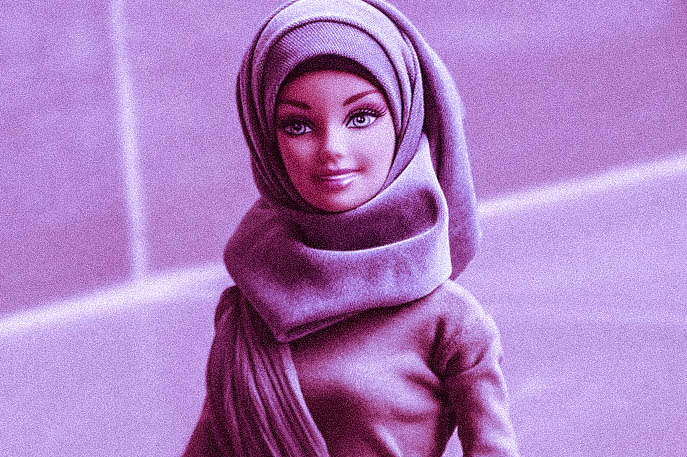Diversity Gets All Dolled Up With The New Barbies
You know her, you love her, and, at one point, you probably had twenty different versions of her. Debuted in 1959, the Barbie doll presented a whole new definition to impossible beauty standards, sporting huge boobs (ow!), an impressive thigh gap (how?), and a waist barely thicker than her neck (wtf?!). Girls everywhere idolized these dolls, and over time they quickly learned that to be beautiful was to look the way these well-dressed toys did. By most standards, this meant waves of long, blonde hair, an alarmingly thin body, and, most importantly, shiny white skin. Barbie was the all-American blonde bombshell – a formulaic result of all different aspects of western beauty, and, for a long time, there was little-to-no variation in her features in over 50 years.
Enter Hijab Barbie, one of the newest models in the Mattel game who comes with muscular legs, dark walnut skin, and a *gasp* black head scarf. For a toy whose sole purpose is to perpetuate societal norms of beauty, this realistic and diverse version of the doll admittedly seems pretty radical. Modeled after Olympic fencer Ibtihaj Muhammad, Hijab Barbie sends a definitive message that beauty standards are changing; that women of all ethnicities and religions are attractive. It challenges euro-centric ideals and introduces young women to the revolutionary concept that it doesn’t take an enormous rack and bleached hair to be considered beautiful. As Muhammad puts it, these dolls “show children how to embrace what makes them different and… remind them that they're beautiful and they can be whatever they want.” We can all snap for that.
Mattel didn’t stop there. In its next play, the doll appeared to come out in support of equal marriage in an Instagram post promoting a collaboration with fashion blogger, Aimee Song, just weeks after Hijab Barbie hit shelves. The post shows OG Barbie and a new “friend” – a doll version of Song – holding hands and wearing matching T-shirts with the pro-marriage equality slogan “Love Wins” emblazoned across the front.
Although both new versions of Barbie are great ways for more girls to see accepted reflections of themselves, why are young women still so concerned with their perception to begin with? In her novel Cinderella Ate My Daughter, Peggy Orenstein claims the biggest problem with Barbies is that, regardless of their specific look, they continue to enforce the idea that the primary focus of any girl should be the way she looks. After all, toys are some of the strongest tools of social constructionism that we have access to, teaching children how to look and how to behave in order to fit in with the rest of us. Boys, for instance, are taught to be hyper-masculine, unemotional, and powerful. Their toys, such as G.I. Joe action figures and Transformers, “speak of power and control,” while girls’ toys are, “more concerned with feelings of the heart, tenderness, love, and the domestic virtues.” Wendy Varney, author of Of Men and Machines-Boys Toys, said toys such as Barbie “carry messages about the social relations in which technology, gender, class, and much more are embedded.” Barbie may look different now and be more relatable to larger demographics, but at her core she is still just another voice telling girls that their value as individuals lies namely in their appearance.
So is everything perfect about Barbie now that she looks a little different? Absolutely not. But if we can’t stop girls from obsessing over their looks and killing themselves to keep up with ever-evolving beauty standards, the least we can do is expand the notion of beauty itself to include love and acceptance. Beauty is no longer a concept exclusive only to western women and their physical features, and this is definitely an amazing thing to see. We need to use this momentum provided by figures like the Hijab Barbie to take the discussion even further, asking ourselves why we teach young women to care so much about beauty instead of other, more internal features. These are things Barbie may never truly be able to encompass or promote, but at least by expanding their models of attractiveness, more and more women can start to feel more confident in themselves and their appearances.

